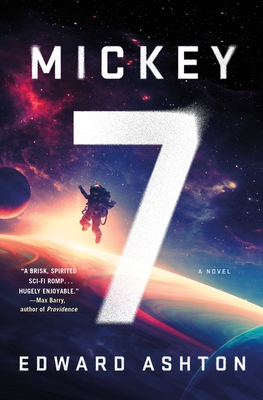Space missions for the colonizing of planets is not a new idea in science fiction – actually, it’s downright common at this point. So when that’s the basic premise of a novel, it takes something a little different to stand out from the crowd. Author Edward Ashton has managed that in Mickey7, with the idea of “expendables”, people willing to do suicidal tasks to make sure the missions succeed.
Sure, there has been plenty of sci-fi with characters who are there to put their lives at risk. Typically, if a task is an obvious risk to human life, a machine, droid or robot is sent in to do the job. But it’s a little different when you add replicants to the mix who are entirely human and have every memory of their previous selves (as long as there was time for an upload before they died). In this instance, a new version of expendable Mickey is created (Mickey8) when it’s presumed Mickey7 has died. The thing is, Mickey7 is still alive and now – due to restrictions on crew numbers, limited rations and not so supportive leadership – both versions need to decide if the “extra” should get recycled or whether they can work together to keep the truth hidden.
Though within the sci-fi realm, this novel is much more about relationships – with yourself (or your other self), with those around you and with the environment you live in. It’s what makes the plot so engrossing and easy to identify with, even though the circumstances are outside of current realities. Of course, the sci-fi aspects keep things interesting, dealing with being on a space mission, colonizing planets, tech and weaponry needed to survive – and replicating humans.
The plot is straightforward, but engrossing as Mickey7 recalls his many deaths and attempts to survive, even while the colony is under attack from hostile native creatures. And the story brings up bigger, thought provoking questions that you don’t often come across in “lighter” sci-fi: whether an expendable human life is worth the same as anyone else’s, as well as the issue of how far a colony mission should go to make its new “home” safe and habitable, especially in regards to intelligent native species on the planet.

